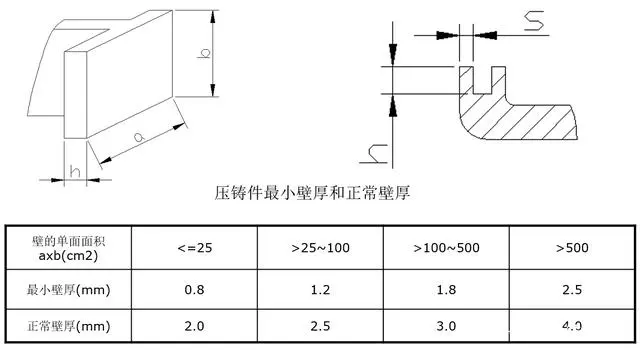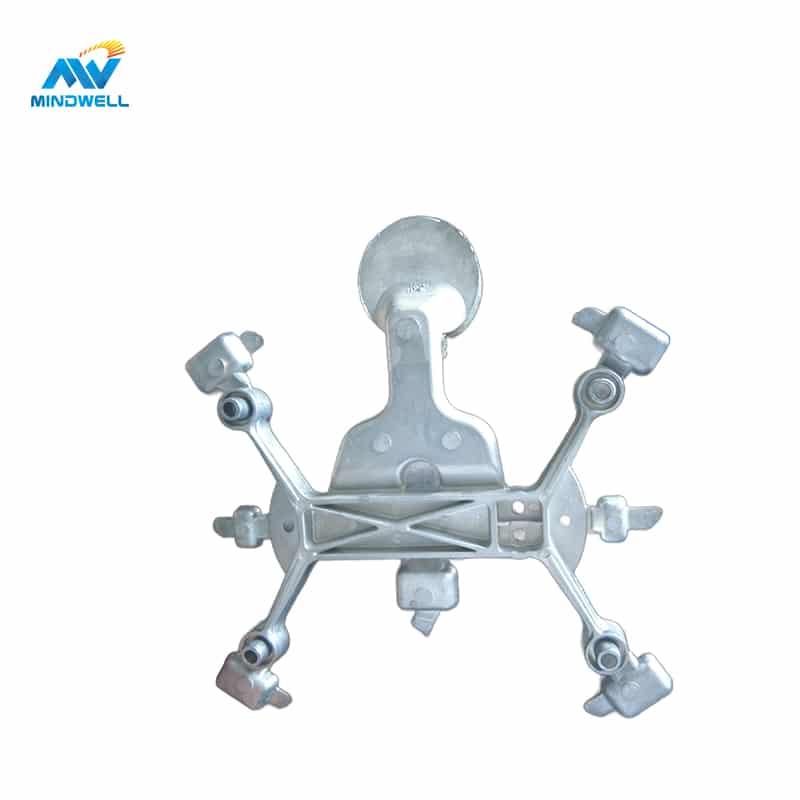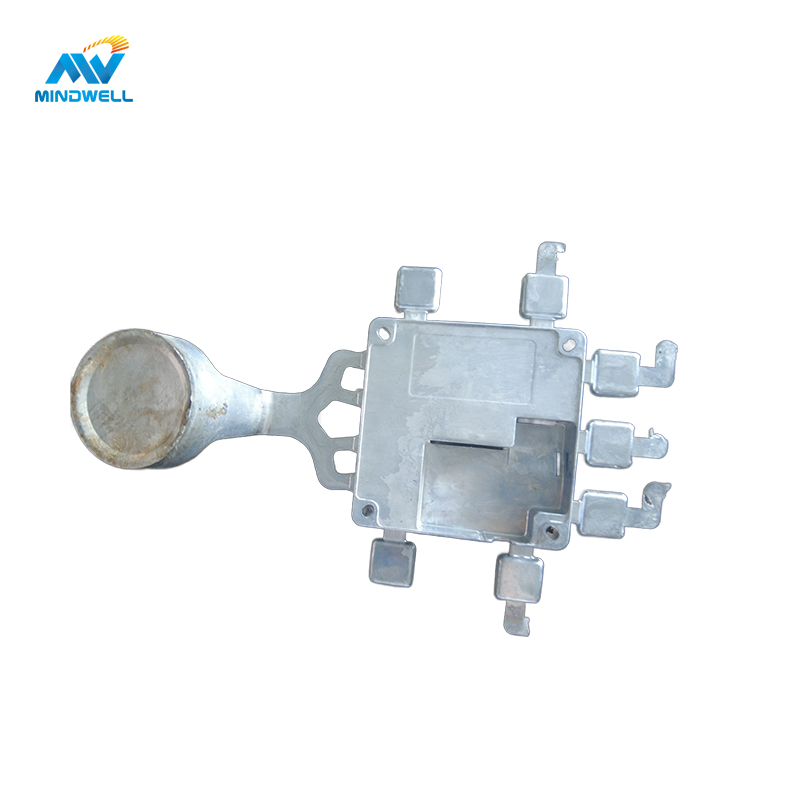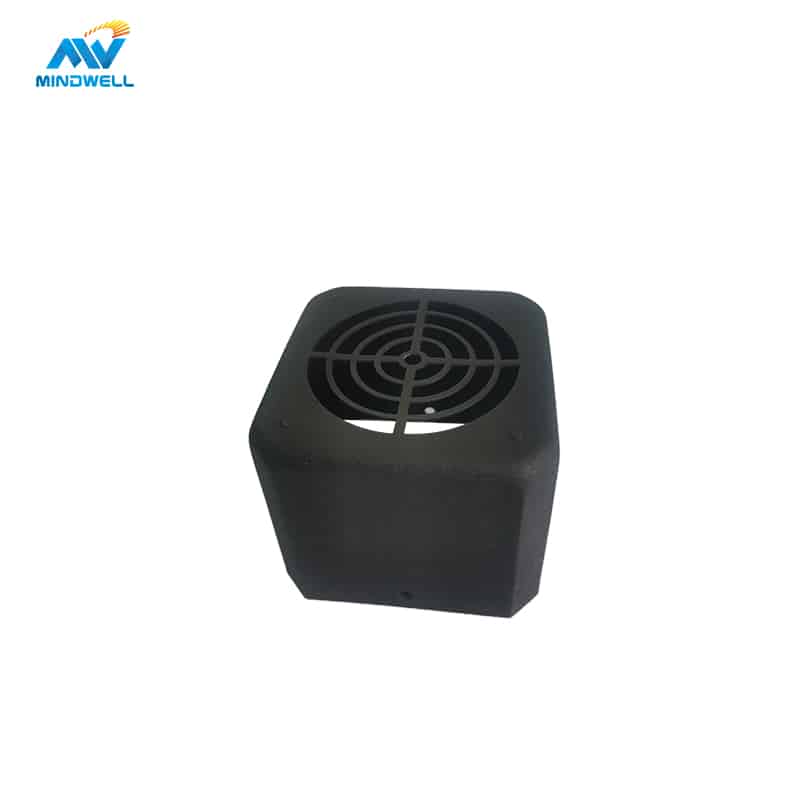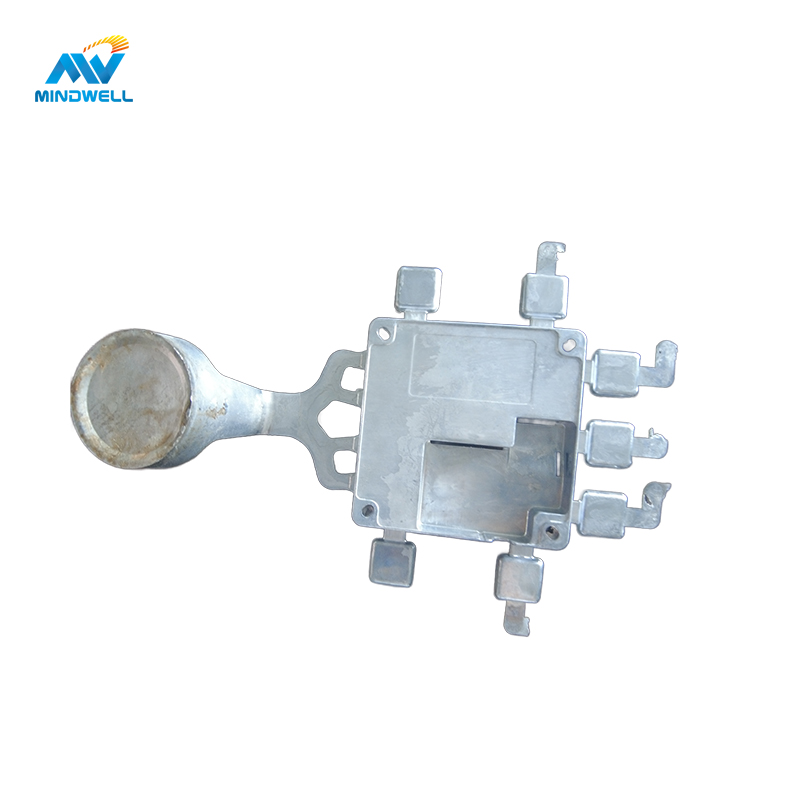The wall thickness of an aluminum die cast part is defined as is the distance from the outer surface of the part to the inner structure or the outer surface on the other side. Wall thickness has a significant impact on the performance and manufacturing process of aluminum die casting parts, as it affects the mechanical properties of the part, including strength, stiffness, and weight.
Thinner wall thickness of aluminum die castings can improve the lightweight and heat dissipation performance of the product, but at the same time, it may also reduce the strength and durability of the part. Thicker wall thicknesses can improve the mechanical strength of a product, but may increase production costs and manufacturing difficulty, and the ideal wall thickness depends on the specific application and intended use of the part.
アルミダイカスト最小肉厚
The minimum wall thickness of an aluminum die casting depends on a number of factors, including the type of aluminum alloy used, the geometry of the product and the design requirements. Generally speaking, the minimum wall thickness of aluminum die castings should be between 0.5 mm and 1 mm. However, if there are special shape or process requirements involved, the minimum wall thickness may vary.
How to determine the wall thickness of cast aluminum parts
The thinness of the wall of an aluminum die casting, called the wall thickness, is a key practical element of the die casting process. The effective wall thickness of the casting part lies in the actual structure of the casting part, the characteristics of the aluminum alloy, and with the die casting process has a close correlation with the main parameters. In order to realize all kinds of regulations, to thick wall and uniform wall thickness is appropriate.
- Aluminum die casting commodity wall is also not suitable for too thin, large-scale too thin wall, easy to appear undercasting, cold segregation and other defects.
- Aluminum die-casting commodity wall of thin thickness selection: under normal conditions, wall thickness is not suitable for more than 4.5mm, small and medium-sized casting parts suitable wall thickness: zinc alloy material 1-3mm, aluminum, magnesium alloy 1.5-4mm, alloy copper 2-4mm.
- Aluminum die-casting goods thickness should be proportional, beneficial to the aluminum alloy liquid “filling type” after another condensation. Can prevent cause forging ground stress, shrinkage loose, cracks and other shortcomings.
- To the aluminum die-casting product variety on the thick-walled tube part, can choose the tendon plate, or inlaid casting inserts to enhance its physical properties and improve the process performance.
- It is not suitable to choose to enhance the thin thickness of the wall of the way to enhance the bearing capacity of aluminum die-casting goods. The casting thickness exceeds must bottom limit, its impact toughness will be reduced with. Casting parts wall is too thick, easy to cause shrinkage and out of the air hole, and will give aluminum die casting production process lead to the initial condensation long, shrinkage and then draw the core, demoulding difficult and other unfavorable conditions.
The intended use of the aluminum casting is also a key factor in determining the ideal wall thickness. Parts that will be subjected to high loads, stress or vibration require thicker wall thicknesses to better withstand forces. In contrast, parts used for non-load-bearing applications may require thinner wall thicknesses to achieve weight reduction and improve overall performance.
Wall thickness for different casting types
The casting methods used for aluminum die castings all have different wall thickness limits. For example, sand casting can have wall thicknesses up to 25 mm, while die casting can have wall thicknesses up to 3 mm. The investment casting process can handle wall thicknesses ranging from 2 mm to 25 mm. Therefore, in different aluminum die casting processes, different casting processes can be selected depending on the wall thickness limitations of the aluminum casting.
Design of Wall Thickness
Uniform wall thickness design is preferred. Uneven wall thickness is prone to shrinkage and cracking, which can cause deformation of the part and also affect the life of the mold. Wall thickness is very thick castings are easy to produce internal shrinkage holes, affecting the mechanical properties of the material, for large aluminum alloys, the wall thickness should not exceed 6mm, because of the increase in wall thickness, the mechanical properties of the material will be significantly reduced, so the recommended wall thickness of the table <2>. For the outer edge wall thickness, in order to ensure good die-casting forming, wall thickness s>=1/4h, and s>=1.5mm, s for the edge of the wall thickness, h for the height of the edge of the wall, as shown in the figure below.
In conclusion, wall thickness is a critical factor in the design and manufacture of aluminum castings. Factors such as the casting method used, the material and the intended use of the part should all be taken into account when determining the optimum wall thickness. Only by understanding the impact of wall thickness is it possible to design and produce quality aluminum die castings.
